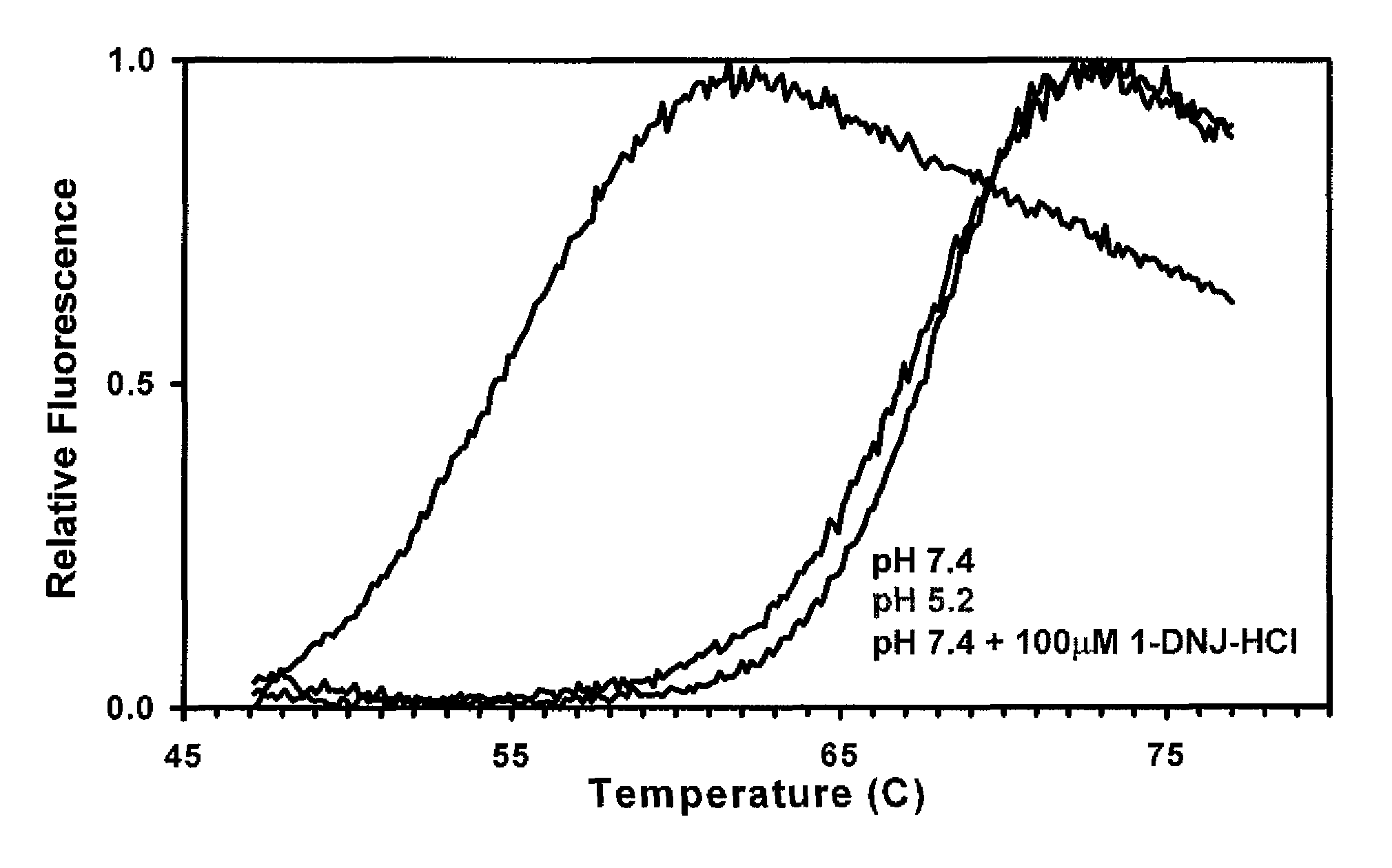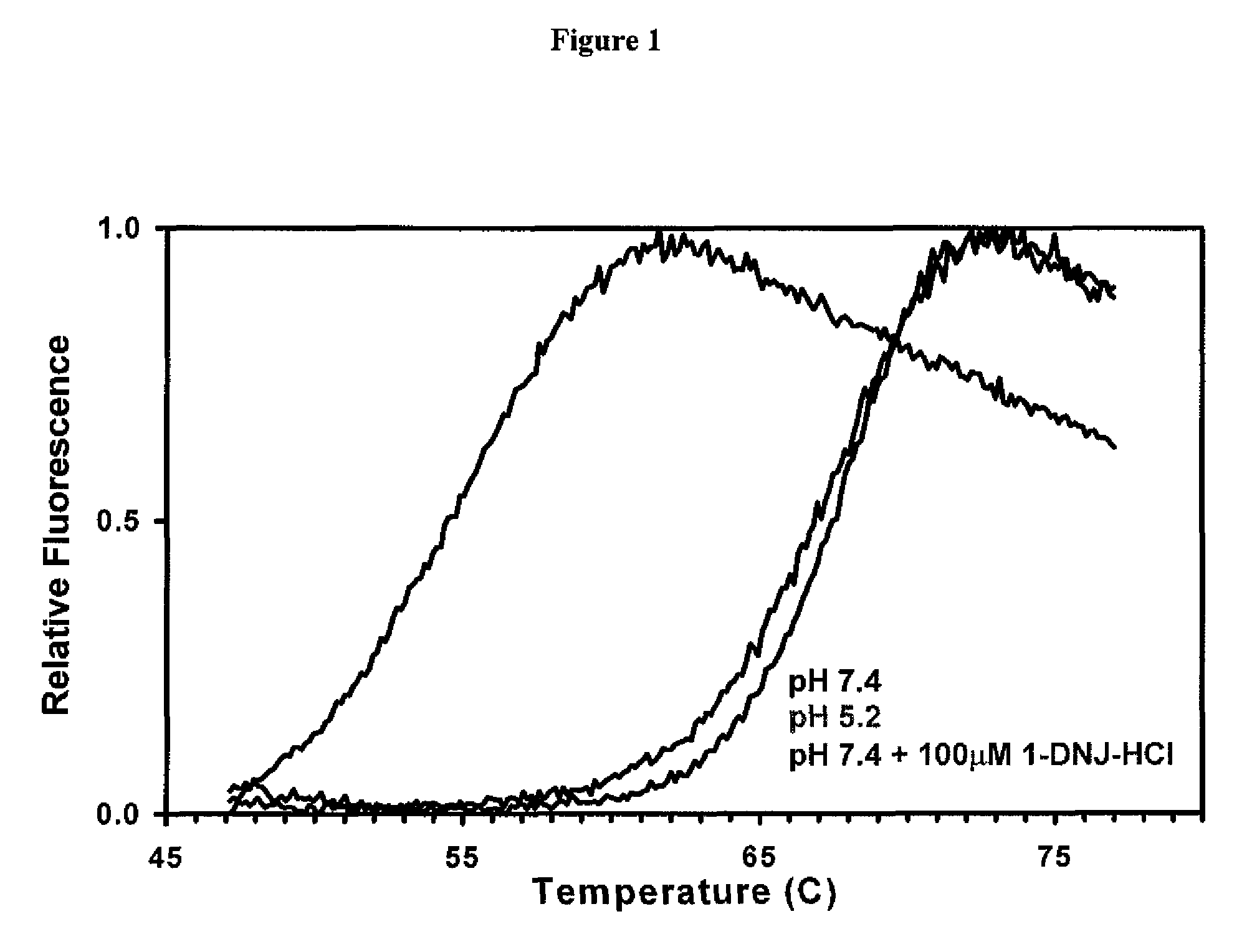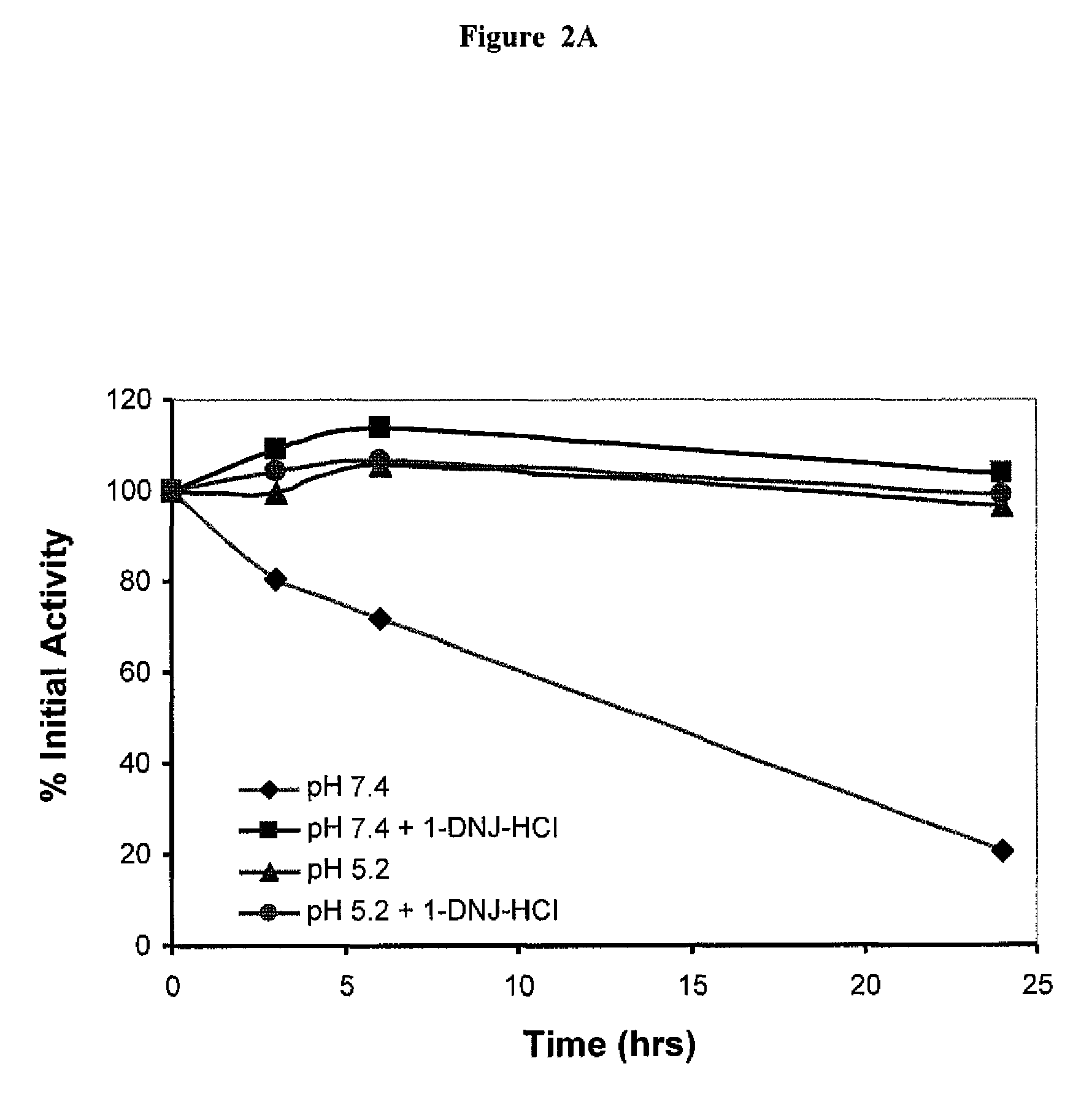Utilization of pharmacological chaperones to improve manufacturing and purification of biologics
a technology of pharmacological chaperones and ph, which is applied in the direction of peptides/protein ingredients, immunoglobulins, peptides, etc., can solve the problems of low protein yield, prone to premature degradation, and less folding efficiency, so as to improve the production of recombinant proteins and the effect of recombinant protein production
- Summary
- Abstract
- Description
- Claims
- Application Information
AI Technical Summary
Benefits of technology
Problems solved by technology
Method used
Image
Examples
example 1
Acid α-Glucosidase Stability Upon Thermal Challenge
[0113]The stability of recombinant human GAA (Myozyme®, Genzyme Corp.) with and without 100 μM of the ASSC 1-deoxynorjirimycin hydrochloride (DN.1) was determined via a thermal stability assay that utilizes heat to induce protein denaturation. Denaturation is monitored using a SYPRO Orange dye that fluoresces upon binding to hydrophobic amino acids (which are not exposed in a folded protein).
[0114]The thermal stability was performed at pH 7.4 for two formulations, which corresponds to the pH of the ER. As shown in FIG. 1, the formulation that contains 100 μM of DNJ at pH 7.4 required significantly more heat to denature, and is thus more stable, as compared to formulation without the ASSC at pH 7.4.
example 2
1-Deoxynorjirimycin (DNJ) Prevents Acid α-Glucosidase Activity Loss Upon Extended Incubation at 37° C.
[0115]Residual GAA activity was determined for four formulations:
[0116](1) Myzozyme alone at pH 7.4;
[0117](2) Myzozyme plus 50 μM DNJ at pH 7.4;
[0118](3) Myzozyme alone at pH 5.2;
[0119](4) Myzozyme plus 50 μM DNJ at pH 5.2.
[0120]Activity was measured, based on the % of initial activity (t=0) over 24 hours. Samples were assayed for GAA enzyme activity based on the hydrolysis of the fluorogenic substrate 4-MU-α-glucose at 0, 3, 6 and 24 hours. The GAA activity was expressed as % of initial activity, i.e. residual activity.
[0121]As shown in FIG. 2A, formulation (1) above (without the ASSC) lost activity over time, having only about 20% of its initial activity 24 hours after administration. In contrast, formulation (2) maintained most, if not all of its initial activity over 24 hours. Both formulations at ph 5.2 (formulations (3) and (4) above) maintained most of their initial activity ...
example 3
DNJ Increases GAA Stability Upon Thermal Challenge
[0123]A thermal stability experiment as generally described in Example 1 was performed on four compositions:
[0124](1) Myozyme only composition;
[0125](2) Myozyme plus 1 μM of 1-DNJ-HCl;
[0126](3) Myozyme plus 10 μM of 1-DNJ-HCl;
[0127](4) Myozyme plus 100 μM of 1-DNJ-HCl;
[0128]As shown in FIG. 3, DNJ-HCl increases GAA thermostability as evident by increases in GAA's melting temperature in a dose-dependent manner.
PUM
| Property | Measurement | Unit |
|---|---|---|
| pH | aaaaa | aaaaa |
| pH | aaaaa | aaaaa |
| temperatures | aaaaa | aaaaa |
Abstract
Description
Claims
Application Information
 Login to View More
Login to View More - R&D
- Intellectual Property
- Life Sciences
- Materials
- Tech Scout
- Unparalleled Data Quality
- Higher Quality Content
- 60% Fewer Hallucinations
Browse by: Latest US Patents, China's latest patents, Technical Efficacy Thesaurus, Application Domain, Technology Topic, Popular Technical Reports.
© 2025 PatSnap. All rights reserved.Legal|Privacy policy|Modern Slavery Act Transparency Statement|Sitemap|About US| Contact US: help@patsnap.com



